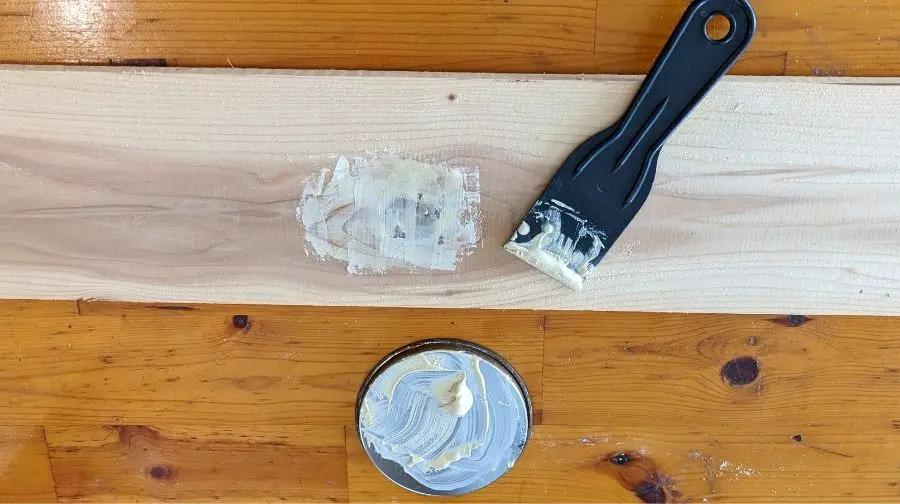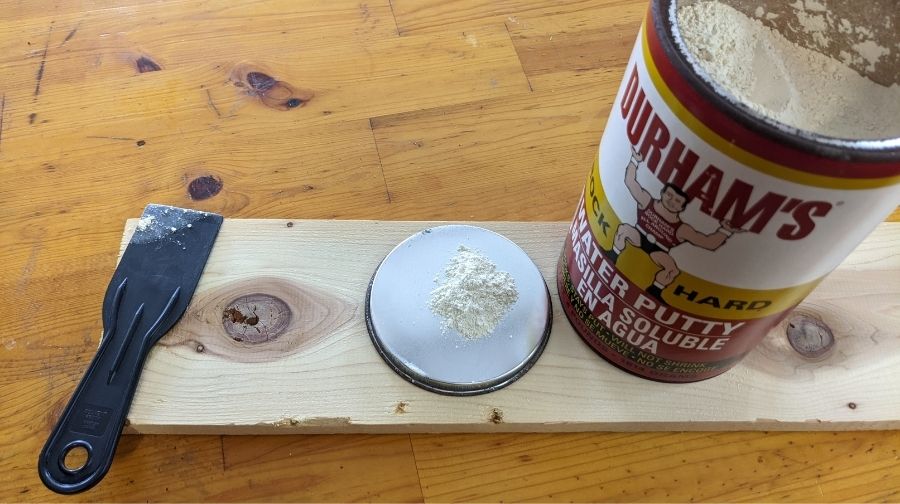
If you’re a woodworker, then you know the importance of using wood putty. Wood putty is used to fill in holes and cracks in wood, and it needs to be primed before it can be painted. In this blog post, we will discuss whether or not you need to prime wood putty. We’ll also give you some tips on how to prime it properly!
Do You Need To Prime Wood Putty?
No, you do not need to prime, paint, or stain over wood putty. Wood putty should only be used on finished projects so you should match your wood putty to the color of your project.
Do I Need To Prime After Using Wood Filler?
Yes, if you plan on painting the project you should prime over the wood filler. It is not necessary to prime if you are staining the project. If you intention is to fully hide the wood filler than chose a darker stain over a lighter one as you could possibly still see the wood filler through the light stain color.
The best way to determine if you need to prime is by doing a test piece. Try priming one section and not priming another section. Allow the project to fully dry before making your final determination. If the wood filler takes on the primer color than it will most likely take on the paint color as well and you should prime over the wood filler. If the primer does not take on the wood filler color then you can safely not prime over it.
If you are unsure if you need to prime or not, a safe bet is to always prime over the wood filler. This will help ensure that your project looks great when it is finished!
Can You Paint Over Wood Putty?
You should not paint over wood putty. It is different than wood filler (use on unfinished projects) and should be used on finished projects. The best approach for wood putty is to match the color of your putty to the final color or stain of your project.
You can do this by purchasing the correct color or by mixing colors together to match as close as possible to your projects color.
Subscribe to This Old House on YouTube
Does Wood Putty Need To Be Sealed?
No you do not need to seal wood putty. Wood putty’s adhesive properties will dry and secure itself into your imperfection you are filling it with. Because this is primarily used on finished projects to find any small mistakes your project should already be sealed and you want to match the color of your wood putty to the projects final color or stain.
Can I Paint Straight Onto Filler?
Yes, priming the filler will help the paint stick better and create a more even finish. The wood filler could show through your coats of paint if a primer coat isn’t used.
Whether you’re using wood filler to patch up a hole or trying to fill in an uneven surface, it’s important to get a smooth, even finish before painting.
If you’re using a water-based paint, you can usually skip the primer and just use a coat or two of paint directly on the wood filler. If you’re using an oil-based paint, however, it’s best to prime the filler first with an oil-based primer. This will help the paint adhere better and create a smoother finish.
No matter what type of paint you’re using, it’s always a good idea to test the paint on a small area of the filler before painting the entire surface. This will help you make sure that the paint color is even and that you’re happy with the results. Once you’ve tested the paint, go ahead and paint the entire surface with a couple of coats. Allow the paint to dry completely before using the surface.
Should I Prime Before Filling?
There is no need to prime before using wood filler. You want your wood filler to dry and adhere to the direct surface you are repairing. Once you’ve applied your wood filler and it has fully dried you can then sand down smooth and prime your entire work piece prior to paint to help ensure a smooth even coat of paint once dried.
How Long After Wood Filler Can You Paint?
As soon as your wood filler dries you can sand and paint. Check your products instructions on drying time to help determine the duration. It will depend on the product and thickness of your filler layer. It could take as long as 30 min, 2-4 hours, or even 24 hours if your layer is thick enough.
Once it’s hardened, you can then sand it down (if necessary) and paint over it.
Now, there are some instances where you may not need to wait the full 24 hours. If you’re using a water-based wood filler, for instance, you may be able to get away with waiting just a few hours before painting. However, it’s always best to err on the side of caution and give it the full 24 hours whenever possible.
Why Does Filler Show Through Paint?
The quick answer is: it depends on the paint you’re using. In general, if your paint is an oil-based paint, you will need to prime wood filler before painting. If your paint is a latex-based paint, you usually don’t need to prime wood filler before painting. However, there are a few exceptions to this rule, so it’s always best to check the paint label to be sure.
One common reason why filler shows through paint is because the filler is not completely dry when you start painting. If you’re using wood filler, make sure you give it enough time to dry before painting. Another reason why filler might show through paint is if the surface isn’t completely smooth. In this case, you might need to use a primer or sand the surface until it’s smooth before painting.
If you’re not sure whether you need to prime wood putty before painting, we recommend that you always test a small area first. This will help you determine whether you need to prime wood putty before painting your entire project. Thanks for reading and happy woodworking!

Does Wood Putty Shrink?
Technically no the wood putty will not shrink as it dries. Although wood putty does dry it doesn’t fully harden allowing it some flexibility to withstand external elements that may affect your project’s wood. Wood putty can withstand temperature changes on your outdoor projects because as your wood expands and contracts due to the elements the wood putty won’t crack and fall out. It continues to have a degree of elasticity making this a preferred product for outdoor projects.



